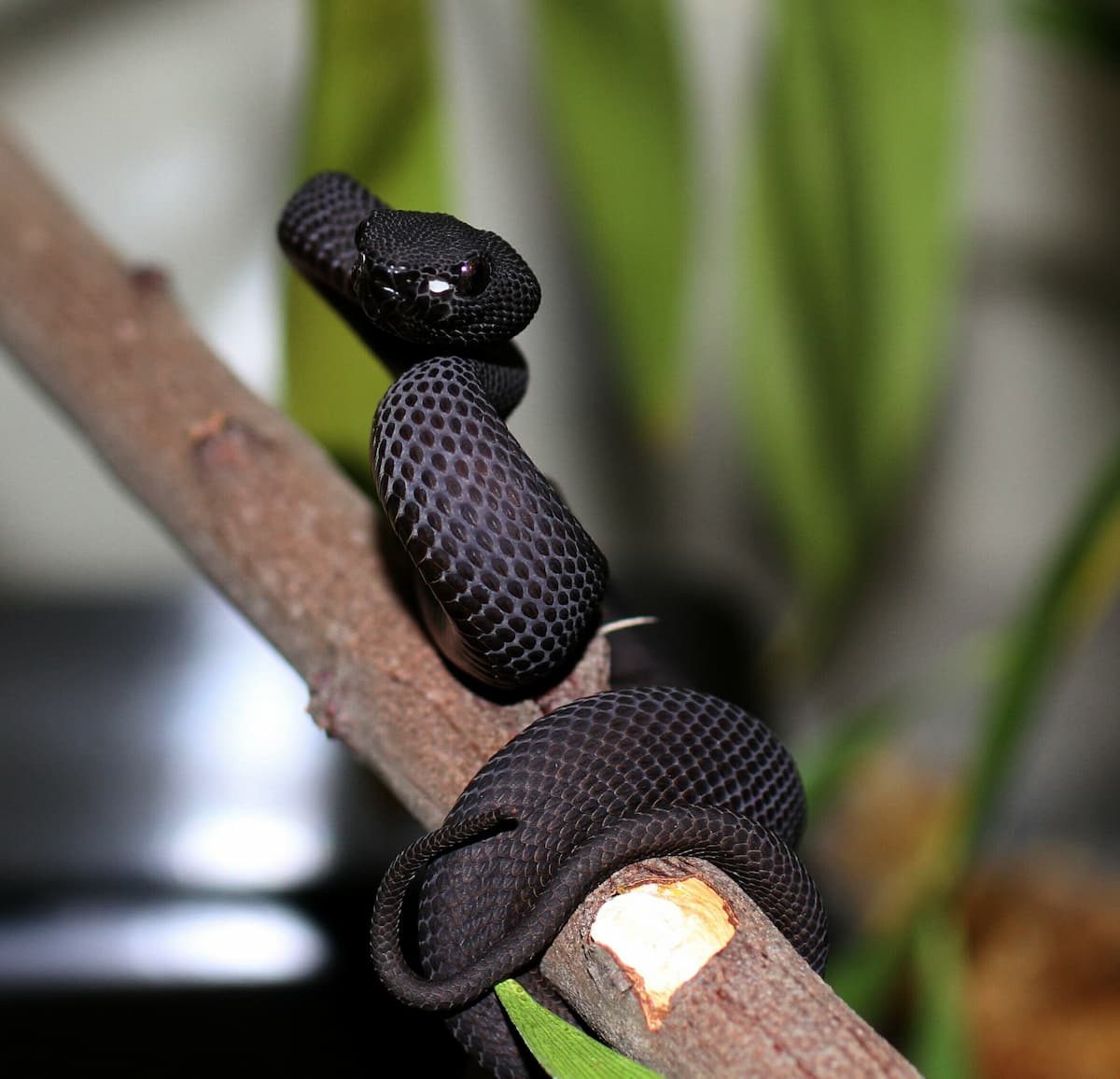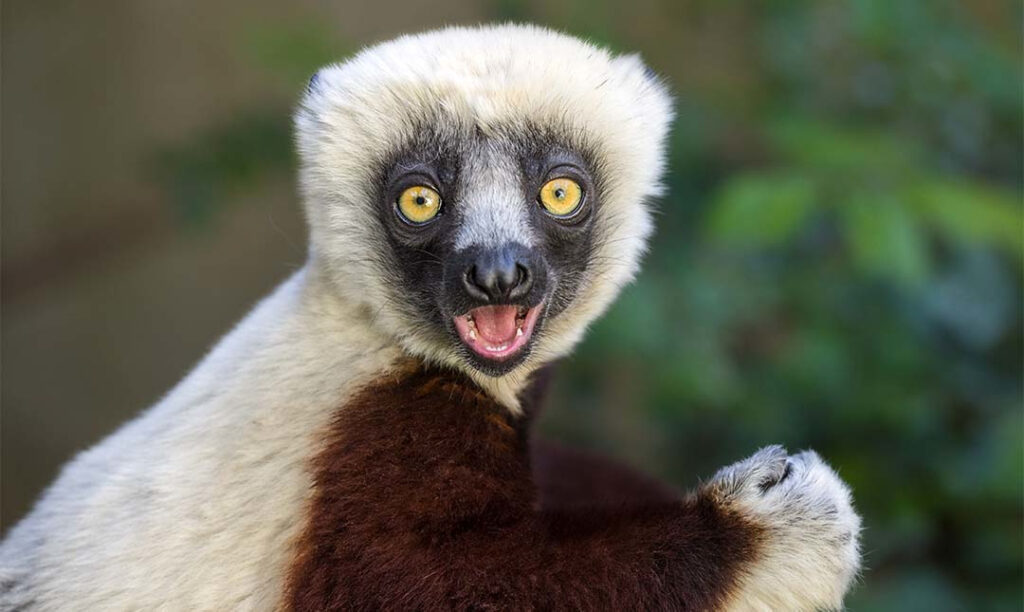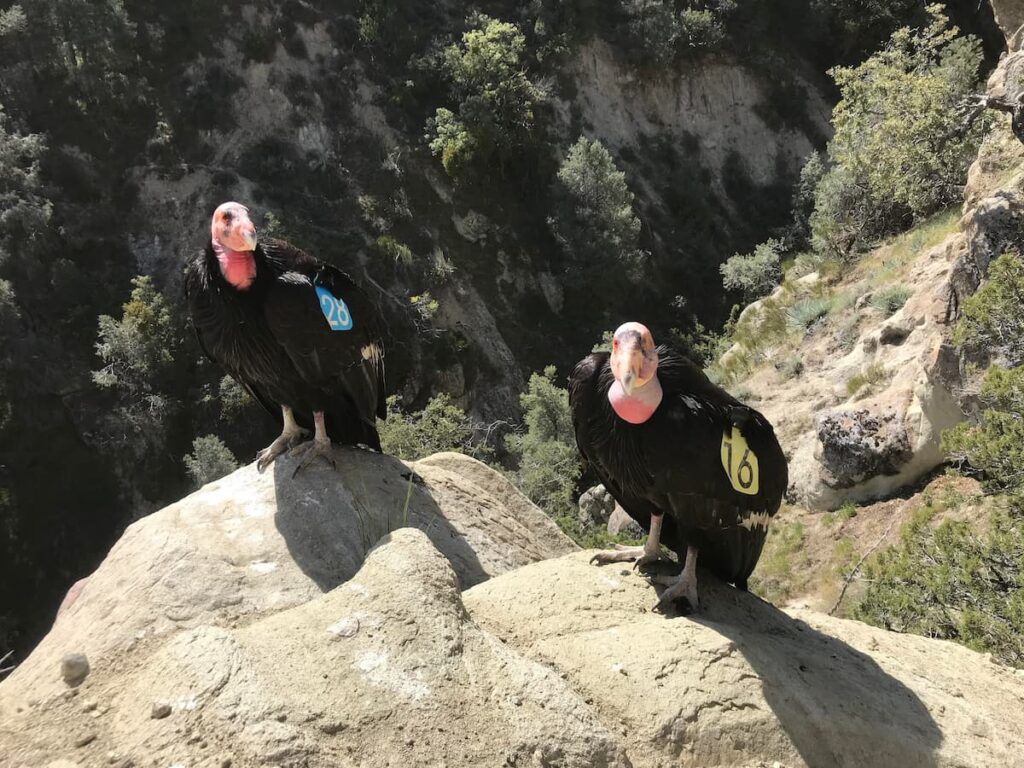
A condor nest check adventure, the pattering of tiny hooves, and serpent births
This year, a total of ten California condor (Gymnogyps californianus) chicks hatched at the L.A. Zoo and two additional chicks hatched at other facilities—one at the Oregon Zoo and the other at the Peregrine Fund’s World Center for Birds of Prey in Idaho.
L.A. Zoo condor staff routinely train field biologists with the U.S. Fish and Wildlife Service and other agencies. COVID restrictions put a temporary pause on training at the Zoo, but out in the field, life goes on as usual and it has been a good year for wild nests and hatches. Condor Keeper Mike Clark has ventured out on a few wild nest checks this year, and in April, Director of Animal Programs Beth Schaefer accompanied him.
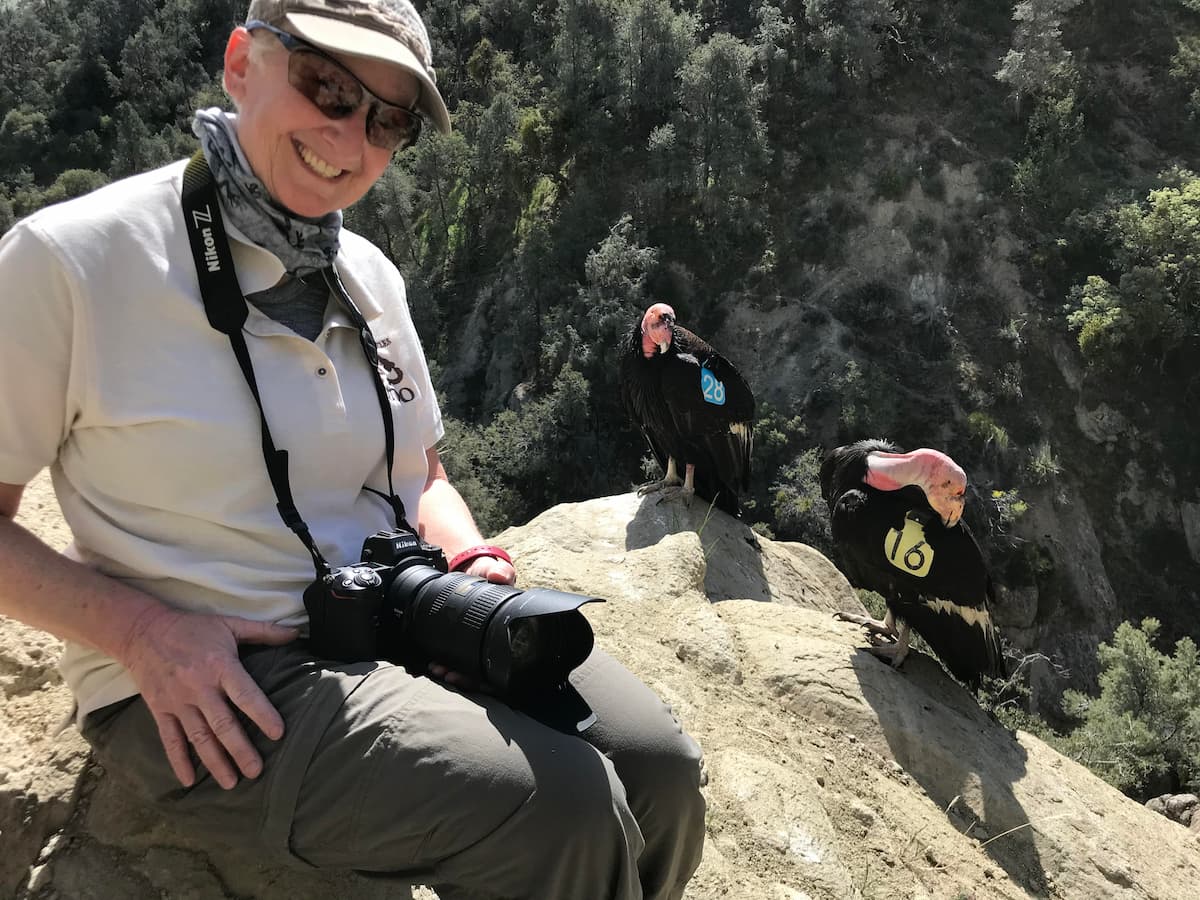
“That day was one of the most incredible experiences of my career,” Schaefer comments. “Driving out to the site is in itself a lesson in California geography with so many changes in terrain! The hike down to the nest site and the final scramble onto the ledge was quite a challenge. Once we got to the nest site, it was amazing to watch an expert like Mike Clark reassure and convince the parents to let the crew into the area to do what we needed to do. The parents hung out at the edge of the nest while Mike taught two U.S. Fish and Wildlife Service (USFSW) biologists how to candle the egg, scan the nest for micro-trash (surprisingly, none was found), and mount a camera under the overhang to monitor the impending chick.”
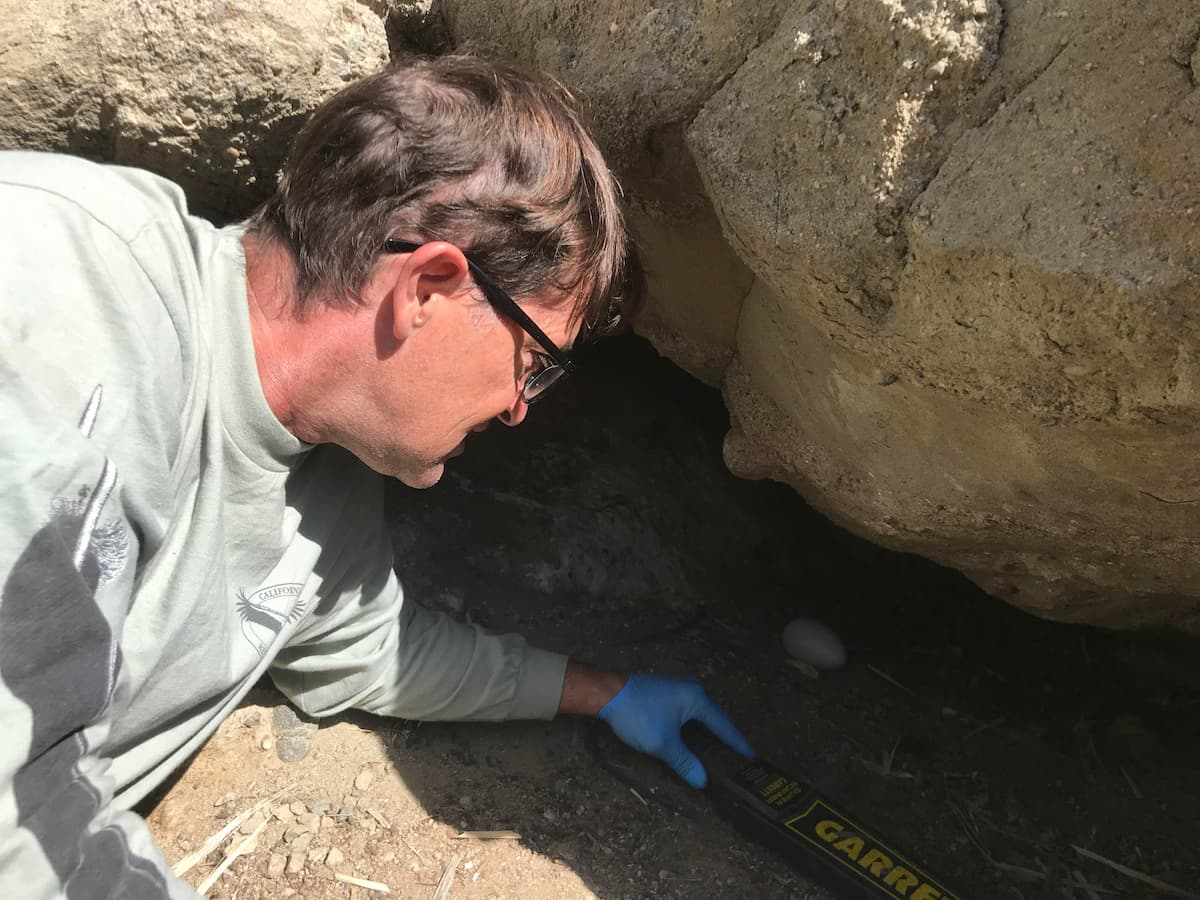
One particularly gratifying aspect of this nest entry is that the male parent is an animal who sustained a wing injury as a youngster. He was brought to the L.A. Zoo, where his wing was surgically repaired by Dr. Stephen Klause. After recovering, he was returned to the wild, where he has been soaring and siring chicks for several years.
A pair of sacred ibises (Threskiornis aethiopicus) arrived from the Santa Barbara Zoo in early May. The sacred ibis was revered by the ancient Egyptians, who believed that the god Thoth, who symbolized wisdom and knowledge, came to Earth in the form of an ibis. The sacred ibis is depicted in ancient Egyptian murals, and mummified specimens have been found in many burial sites; however, because of extensive swamp drainage and land development, the sacred ibis is now extinct in Egypt. Unlike most other ibises, the sacred ibis is a very quiet bird. The only sounds it makes are low croaks. Sacred ibises use their sensitive, down-curved bills to probe for food in mud and underwater in marshes, swamps, riverbanks, flooded farmlands, and coastal lagoons in sub-Saharan Africa and in the Middle East. The species has been introduced in France, Italy, Spain, and the southeastern U.S.
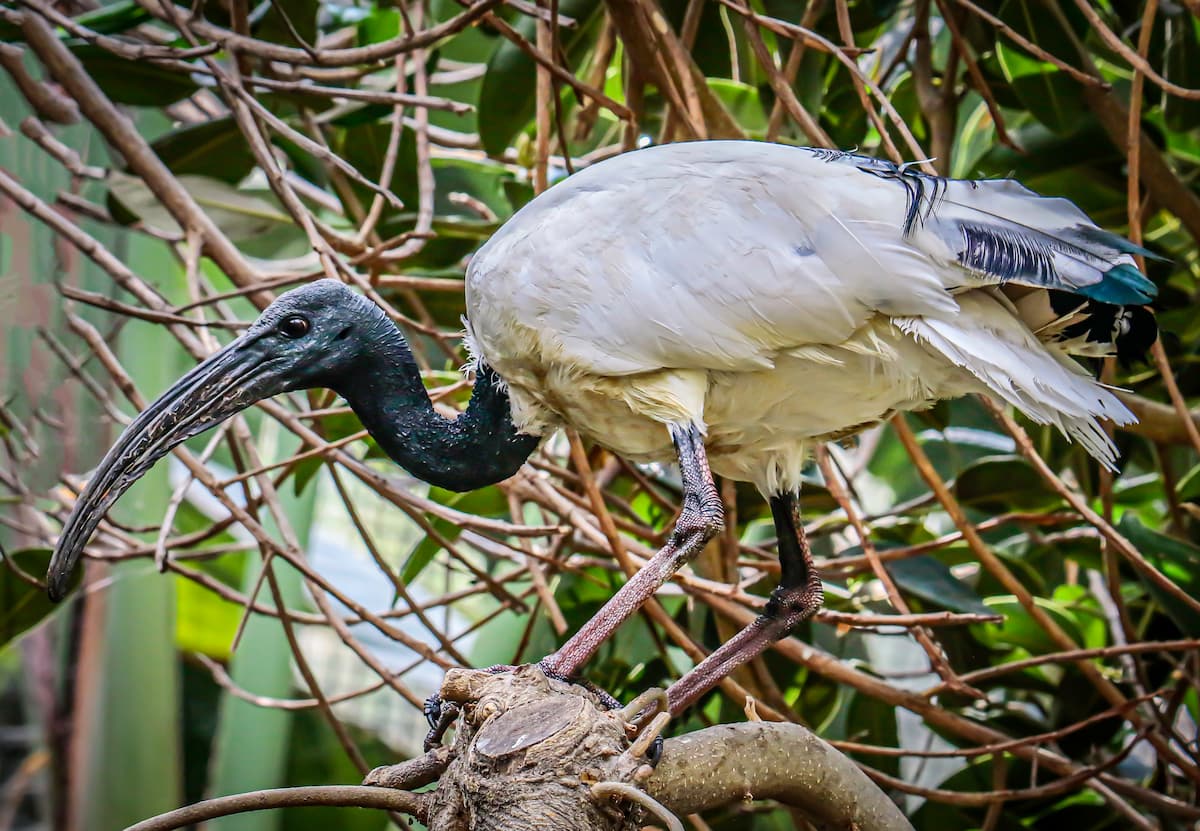
A Speke’s gazelle (Gazella spekei) was born on May 2. The strange nose of a Speke’s gazelle has three folds of skin on it. When the animal is alarmed, it inflates these pleats to sound a warning to the herd. The inflated pouch acts as an amplifier that makes the alarm call as loud as a pistol shot. This feature also helps to regulate their body temperature, cooling their brains and preventing them from overheating, a condition that can be deadly. Like many desert-dwelling mammals, the gazelle’s belly is white, helping to deflect heat rising from the desert sand. Dark stripes near the eyes and down the front of the muzzle are thought to function like the eye black that athletes use under their eyes to reduce glare from the sun. They are most active at dawn and dusk when temperatures are cooler. The L.A. Zoo’s first trio (a male and two females) of Speke’s gazelles came from the Saint Louis Zoo in November 1984. A male named Pinocchio was born the following March, the first of 67 total to be born here.
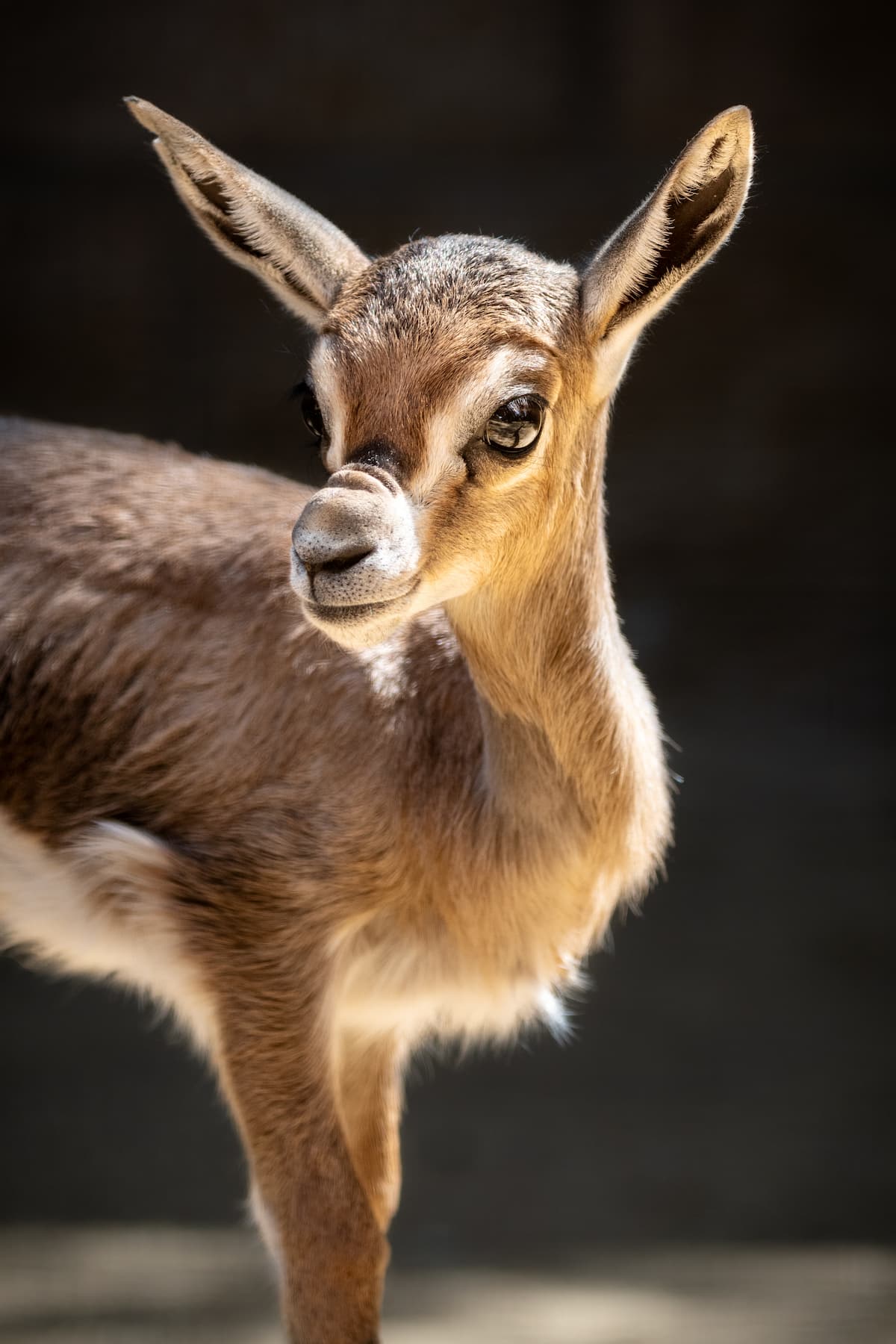
On May 14, a Chinese goral (Naemorhedus griseus) was born. A second was born on June 2. Gorals, which reside in the Zoo’s hillside habitats across from the Chimpanzee Penthouse, are small goat-like ungulates. This species is also known as the gray long-tailed goral and is native to mountainous regions of Myanmar, China, India, Thailand, Vietnam, and possibly Laos. In some parts of its range, it is over-hunted and the International Union for the Conservation of Nature (IUCN) considers it Vulnerable. The latest two Chinese goral kids to join our herd make a total of 17 born at the Zoo. We started working with this species in September 2000.
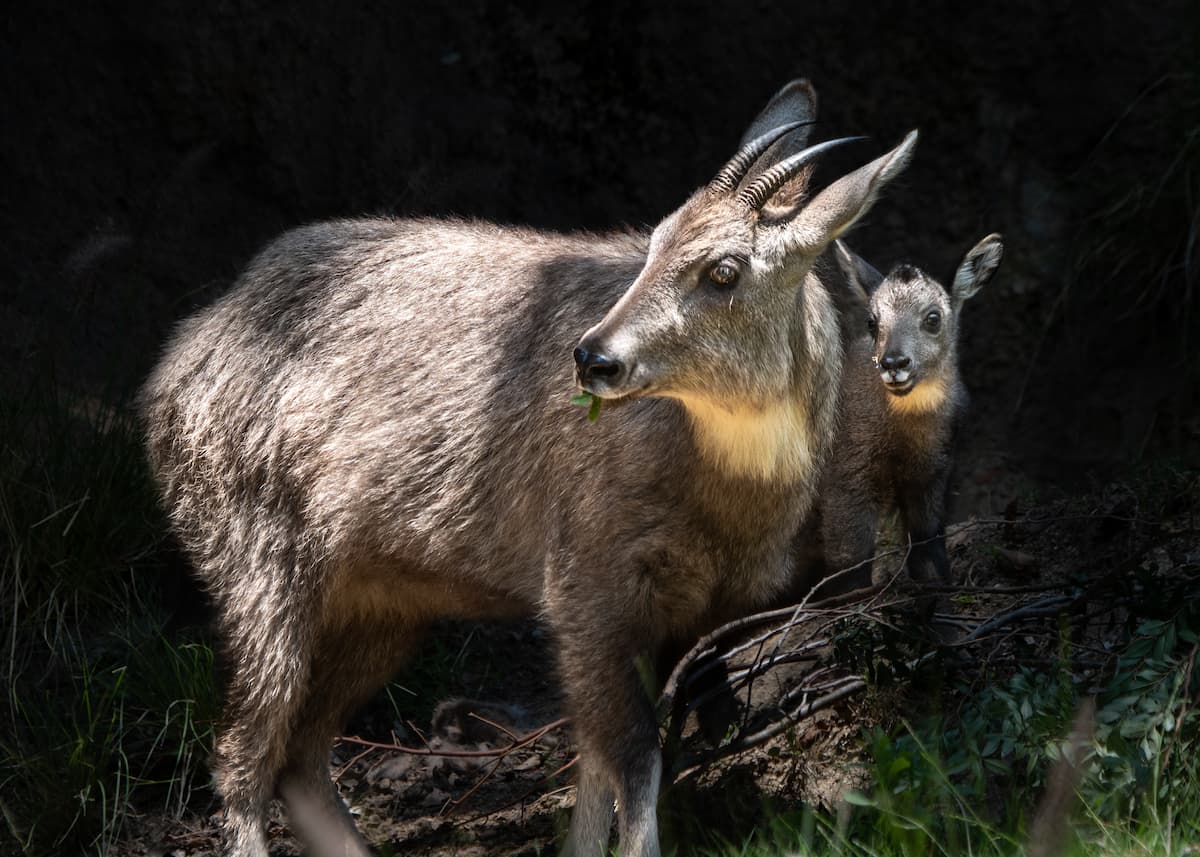
A litter of seven mangrove vipers (Trimeresurus purpureomaculatus) was born. This venomous pit viper species is native to India, Bangladesh, and Southeast Asia. Like most pit vipers (a group that includes rattlesnakes), mangrove vipers are viviparous. In some snakes and lizards, no external eggshells are formed and embryos develop encased inside membranes within the mother’s body until they are ready to emerge. These are said to be “live bearers,” though this is not the same as live birth in mammals because the young do not receive nutrients from the mother’s body during development, a phenomenon that occurs only in placental mammals.
